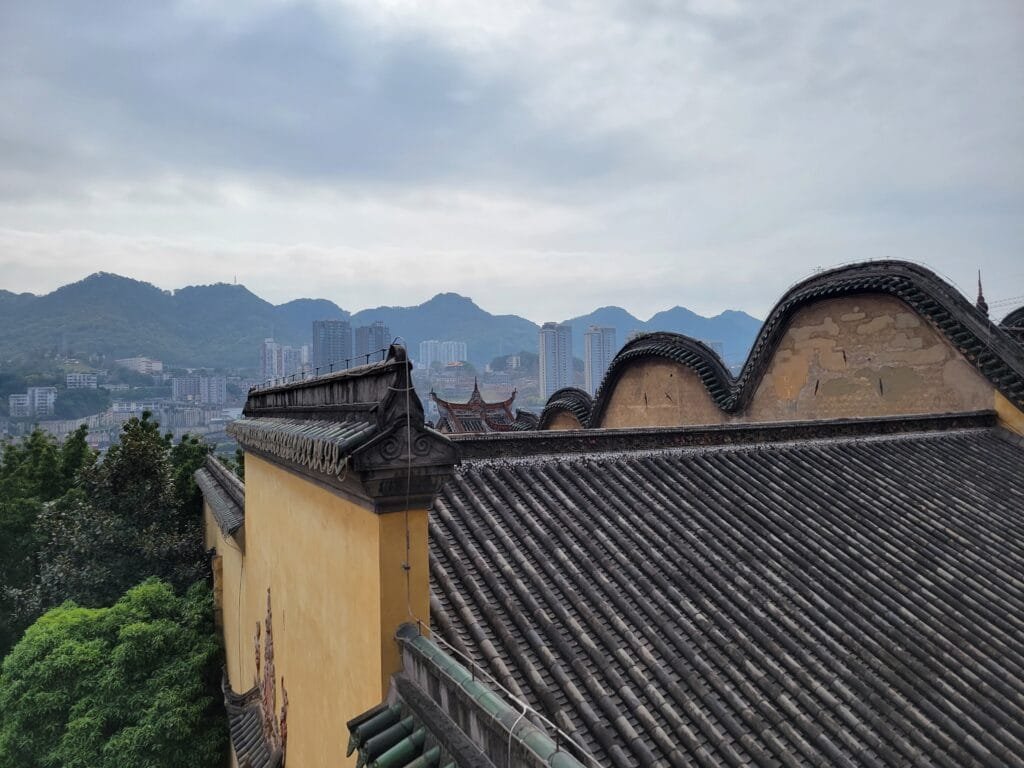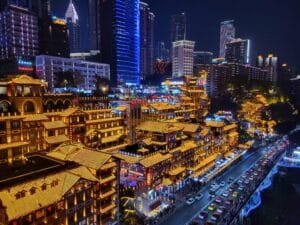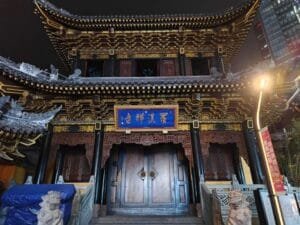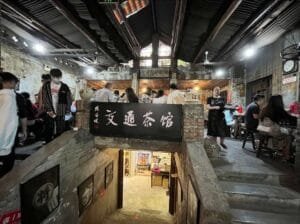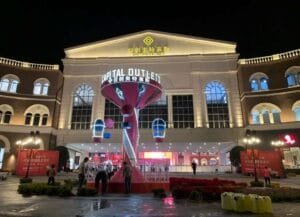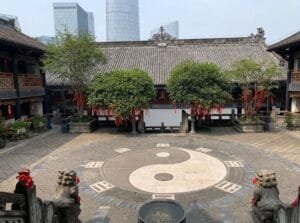Huguang can be reached via a short walk from Xiao Shen Zi Station of line 6 and 1. We recommend to take the metro, as driving a car to central Chongqing is madness.
Note: You can download either Baidu Maps or Amap and navigate through the buttons below. You can also directly order a taxi through the App. Learn more in this Guide.
Huguang Guild Hall (湖广会馆)
If you are visiting Chongqing and want to include some culture in to your trip. Huguang Guild Hall is a convinient place to do so. It is not far from central Chongqing and other Chongqing attractions like Hongyadong or Longmenhao. You could do all of them in one day of walking through Chongqing City for sightseeing.
The Hall itself was not overly visited on a weekday and you could calm down in these old yellow halls. Especially the inner court garden was lovely planted and a great retreat.
The Hall itself has a great history of inner Chinese migration and is well preserved. Especially the wood carvings are really beautiful. Very well preserved pieces of art.
The Huguang Guild Hall, located in Yuzhong District near the Yangtze River, is a historical site representing Chongqing’s cultural past. Built in 1759 during the Qing Dynasty under Emperor Qianlong, it functioned as a gathering place for migrants from Hubei, Guangdong, Guangxi, and Hunan provinces. This site was particularly significant during the “Huguang Fills Sichuan” migration, a movement that brought settlers to rebuild Sichuan after natural and man-made disasters.
The complex includes various halls, temples, and theaters, all reflecting architectural styles from different regions. Among its notable structures are the Qi’an Guild Hall, established by immigrants from Hubei’s Huangzhou Prefecture, and the Guangdong Guild Hall, each showcasing the unique traditions of their regions of origin. The Guild Hall also served as a venue for social events, business dealings, and cultural activities, helping newcomers integrate into Chongqing society.
Today, the Huguang Guild Hall operates as a museum and cultural site, offering insights into Chongqing’s migrant culture and historical development. Its traditional architecture and role in the city’s history make it a prominent destination for visitors and researchers interested in learning about the region’s past.

